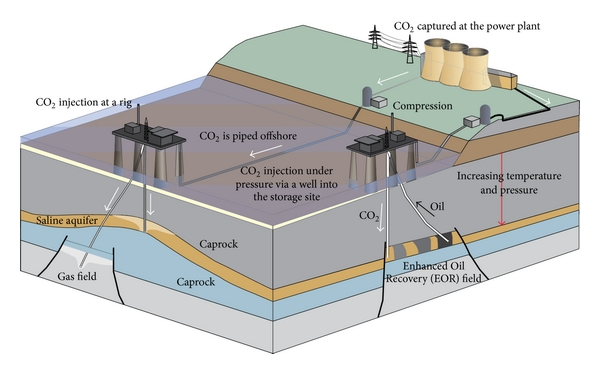Fracking, or Hydraulic Fracturing, is the process of injecting high pressure fluids into small cracks in the rock formation to release oil and gasses (Sheng, Sousani, Ingham, and Pourkashanian, 2015). A specific method used is the Carbon Capture and Storage method, which utilizes five steps to extract and store both carbon dioxide and oil (Sheng, Sousani, Ingham, and Pourkashanian, 2015).
The five steps are as follows:
- Capture carbon dioxide produced from nearby industrial facilities
- Liquify carbon dioxide
- Transport carbon dioxide under high pressure to injection site
- Inject carbon dioxide into saline aquifer or gas field while under high pressure
- Extract oil
The steps are shown in the figure below which was extracted from the review article, Recent Developments in Multiscale and Multiphase Modeling of the Hydraulic Fracturing Process written by Yong Sheng, Marina Sousani, Derek Ingham, and Mohamed Pourkashanian.
References
Sheng, Y., Sousani, M., Ingham, D., & Pourkashanian, M. (2015). Recent Developments in Multiscale and Multiphase Modelling of the Hydraulic Fracturing Process. Mathematical Problems In Engineering, 20151-15. doi:10.1155/2015/729672
